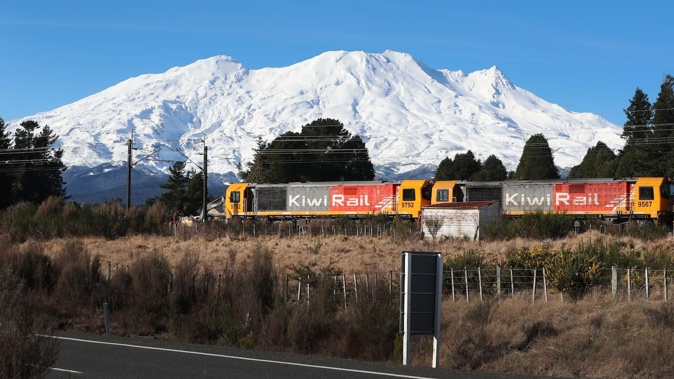
KiwiRail has disestablished 61.5 full-time equivalent (FTE) jobs affecting staff who work in finance, human resources, and health and safety.
The state-owned enterprise has also established 21 new roles, meaning the net loss is 40.5 FTE jobs.
Chief people and communications officer Andrew Norton told the Herald that KiwiRail was changing how it worked.
This was to improve efficiency, focus on customer needs, meet shareholder expectations and grow the business.
“Our transformation involves many initiatives, developed by KiwiRail,” Norton said.
“Like any business, that includes ensuring staffing levels are appropriate and that our organisational structure reflects our needs.”
Norton said KiwiRail was confident the organisational and staffing changes would allow them to continue to deliver for customers.
KiwiRail has been under intense scrutiny in recent months after its plan to replace its ageing ferry fleet with two mega ferries was left dead in the water. The Government refused to fund a cost blowout of $1.47 billion for the portside infrastructure needed to support the larger ships.
The Aratere grounding was the latest in a string of high-profile breakdowns involving Interislander.
KiwiRail’s shareholding ministers have also raised “serious questions” about the organisation’s financial outlook and its safety record.
In a letter dated April 3, Minister for State-Owned Enterprises Paul Goldsmith pointed to the Kaitaki mayday call incident when the ferry lost power in Cook Strait with 864 people on board and started drifting towards Wellington’s rocky South Coast.
“Recent incidents including the January 2023 Kaitaki incident have made us concerned about KiwiRail’s approach to health and safety and its ongoing asset management practices. We expect lessons learnt from this are applied across all company activities,” Goldsmith wrote.
 KiwiRail chief executive Peter Reidy says they are committed to lifting the health and safety performance of the company. Photo / Mark Mitchell
KiwiRail chief executive Peter Reidy says they are committed to lifting the health and safety performance of the company. Photo / Mark Mitchell
Goldsmith said KiwiRail was failing to achieve its target of halving its Total Recordable Injury Frequency Rate (TRIFR) over three years. This figure records how often injuries happen at work.
Ministers expected to see “demonstrably improved health and safety outcomes”.
KiwiRail chief executive Peter Reidy has previously told the Herald he would continue to focus on the lagging safety indicator.
In the 2022 financial year, there was a 23.2% reduction in the TRIFR from 31.2 to 23.9 injuries per million people-hours worked. The following financial year it was 25.8.
Reidy said the latest available figures show a 10% decrease over the 12 months to the end of May.
“KiwiRail is committed to lifting the health and safety performance of the company to ensure our team arrives home safely every day. We have engaged extensively with all staff and union members to lead and drive comprehensive leadership-led safety culture improvement.”
High-potential critical risk near-miss events – those that could lead to a fatality or serious harm – have reduced by 43% over the 12 months to the end of May, Reidy said.
“This is an important leading indicator for safety culture and risk severity.”
Georgina Campbell is a Wellington-based reporter who has a particular interest in local government, transport, and seismic issues. She joined the Herald in 2019 after working as a broadcast journalist.
Take your Radio, Podcasts and Music with you









